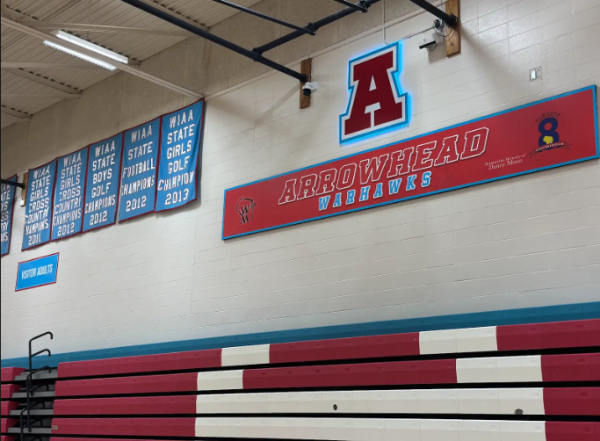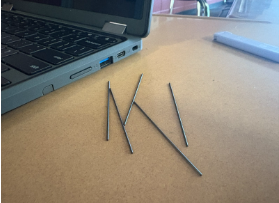Dress Code Sparks Controversy
When the school year nears its end, students break out their summer clothes: shorts, tank tops, and any apparel used to beat the heat.
Some of those clothes defy the dress code, but why?
Bandannas, bare midriffs, strapless tops, cleavage, tank tops, spaghetti straps, and extremely short skirts and shorts are a few of the dress code violations included in the Arrowhead Student Handbook.
A handful of students believe that the dress code is aimed unfairly towards girls, as most violations listed in the handbook pertain to females.
“If a girl’s body can be sexualized and distracting, why can’t a guy’s?” says Brooke Birkland, a sophomore at Arrowhead.
Summer clothes are not the only wardrobe choices that may break the dress code. Hats and drug related clothing items are also listed as violations.
As a general rule, according to the Arrowhead Student Handbook, clothing that “disrupts the educational process or which causes health or safety problems” are prohibited. But what entails these prohibitions?
“Something that’s going to, when they say disrupt the educational process, is open and not limited to things that would cause another student to be distracted from their learning,” says Debra Paradowski, Arrowhead’s south campus associate principal.
Walking barefoot in the hallway is a dress choice that would result in safety issues.
“I do not agree with it [the dress code], and I think it should be less strict because people are supposed to dress how they want to dress, it’s like telling someone they can only wear certain colors to school, it’s practically the same thing. Yes, I think there should be some strictness to it, because it is still school,” says Birkland.
According to Paradowski, if students disagree with the dress code, petitions can be brought to the school board. The associate principals have also talked about forming a group of students that they can talk to about policies and procedures at Arrowhead, such as the dress code, so that they can see where students are at, how they feel, and what can be done to improve disagreements.
Paradowski says the school would like to teach students to respect themselves and others, and part of that is how they dress.
As punishment for breaking the dress code, students are asked to change into more appropriate attire. Sweaters can be used to cover up, Clothing can be dropped off at school as well, this way the student can change.
“We are here for the kids. That’s probably one of our worst roles we have to take on when I have to tell a young lady or a young fella that they’re not dressed appropriately and then have to explain why. With that being said, it’s not a fun thing for staff or administrators,” says Paradowski.






Melissa Engaldo • Jan 5, 2016 at 1:41 PM
As a parent, I feel that the boundaries need to start at home but certainly need to continue and be practiced at school. I don’t feel that having a dress code is really that limiting for students. Once these students get into the workforce they need to be respectful and most companies will prohibit certain attire as well. I’m not sure why wearing inappropriate clothing is so sought after.